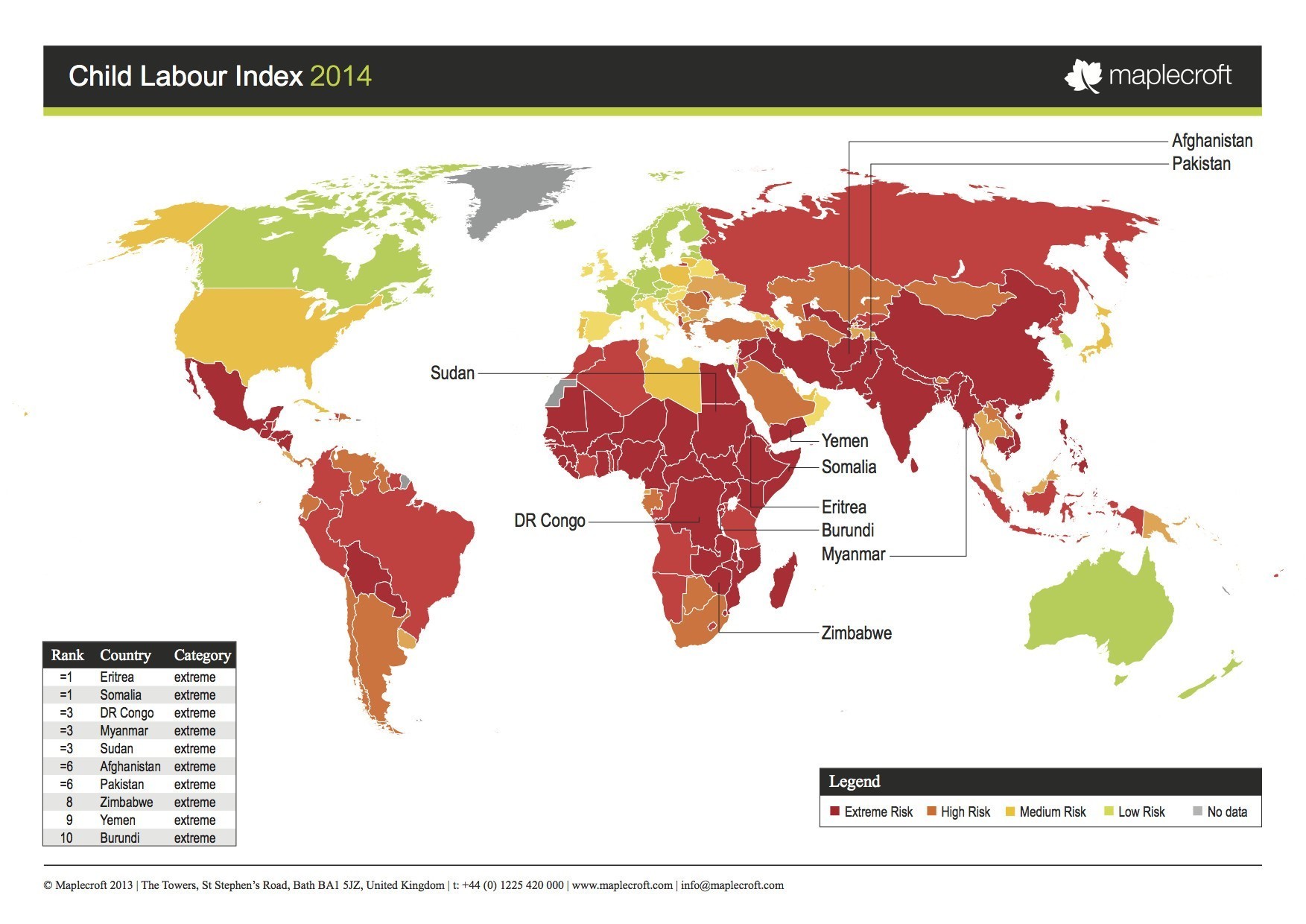The horrors of modern slavery, in numbers

Forced labour generates $150bn a year – three times Apple's revenues
Image: REUTERS/Kenny Katombe - RTSIIMR
Stay up to date:
Human Rights
Human Rights is a key topic at the World Economic Forum's Annual Meeting 2017. Watch the session on Issue Briefing: Human Rights in a Multipolar World here.
Modern slavery is a hidden crime, yet it’s happening right under our noses, in every part of world. In fields, factories, building sites, brothels and homes.
It takes on many different forms: human trafficking, forced and bonded labour, sexual exploitation, domestic servitude, forced marriage, organ removal, and often exists in more than one of these guises.
There are currently an estimated 45.8 million people enslaved worldwide. This is roughly equivalent to the population of Spain.

The Global Slavery Index 2016 assessed the extent of the problem and adequacy of governments’ responses in 167 countries. North Korea, where an estimated 4.37% of the population is enslaved, has the highest incidence of modern slavery, followed by Uzbekistan at 3.97% and Cambodia at 1.65%.
In terms of absolute numbers, India has more people in slavery than any other country – an estimated 18.3 million – but has taken significant steps to tackle the problem, according to the Walk Free Foundation, which produced the index.
Slavery is a booming criminal industry. Forced labour generates $150 billion a year in illegal profits, figures from the International Labour Organization (ILO) show. That’s more than the GDP of most African countries and three times Apple’s revenues.
The ILO estimates that there are 21 million victims of forced labour globally – 19 million of whom are exploited by criminals working for themselves or gangs, and over 2 million by the state or rebel groups.
More than one fifth of enslaved people working for individuals or gangs are sexually exploited, and victims of sex trafficking include an estimated 1.8 million children.
Almost one third of trafficked people who are found are children, according to a 2014 UNODC report on human trafficking.
In Africa and the Middle East children make up the majority of victims. In Europe and Central Asia, on the other hand, they are outnumbered by adults, mainly women.

Nobel Peace Prize laureate Kailash Satyarthi founded the charity Bachpan Bachao Andolan (Save the Childhood Movement), which has rescued more than 80,000 enslaved children in South Asia.
He also leads the Global March Against Child Labour, a global movement to bring child labour and child slavery to the attention of world leaders.

Don't miss any update on this topic
Create a free account and access your personalized content collection with our latest publications and analyses.
License and Republishing
World Economic Forum articles may be republished in accordance with the Creative Commons Attribution-NonCommercial-NoDerivatives 4.0 International Public License, and in accordance with our Terms of Use.
The views expressed in this article are those of the author alone and not the World Economic Forum.
Forum Stories newsletter
Bringing you weekly curated insights and analysis on the global issues that matter.
More on Civil SocietySee all
Gustavo Maia
April 22, 2025
Michael Boampong and Kajsa Hallberg Adu
April 16, 2025
Toshihiro (Toshi) Nakamura and Ewa Wojkowska
April 11, 2025
Sophia Otoo and Cynthia Rayner
April 2, 2025
David Sangokoya and Jack Hildebrand
March 3, 2025
Cheri-Leigh Erasmus and Blair Glencorse
February 24, 2025





